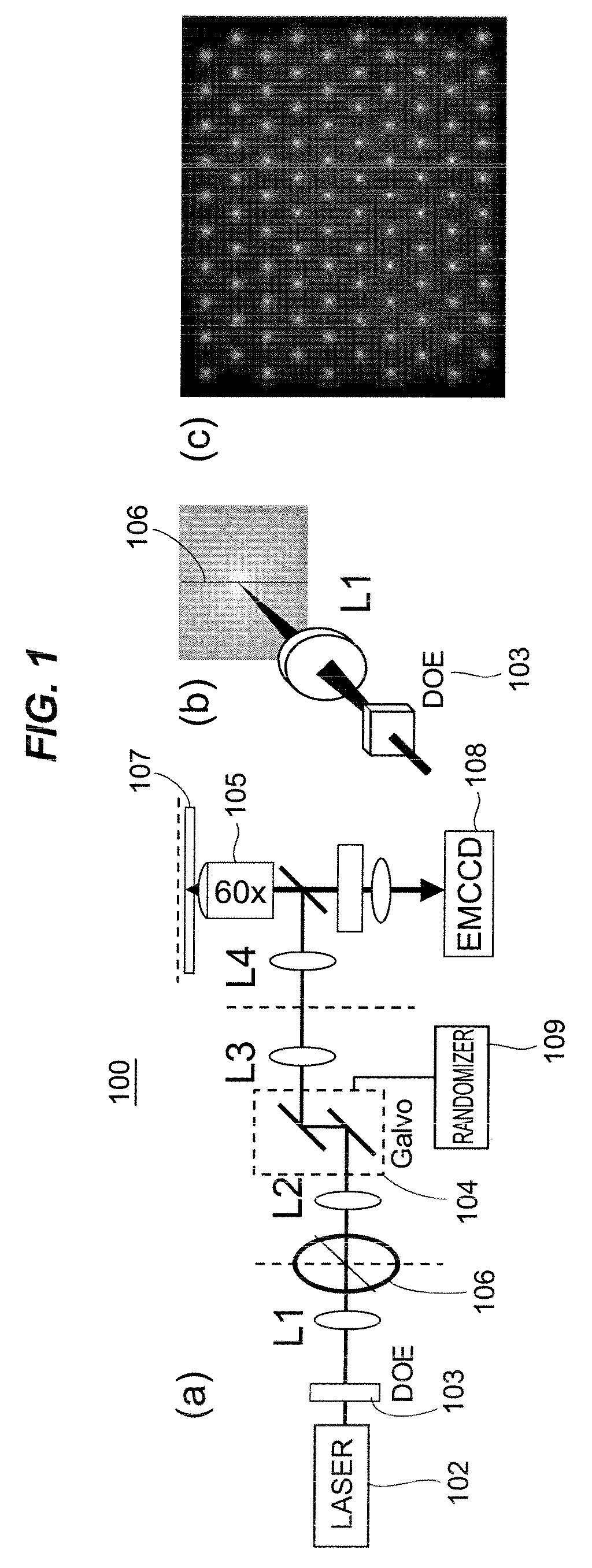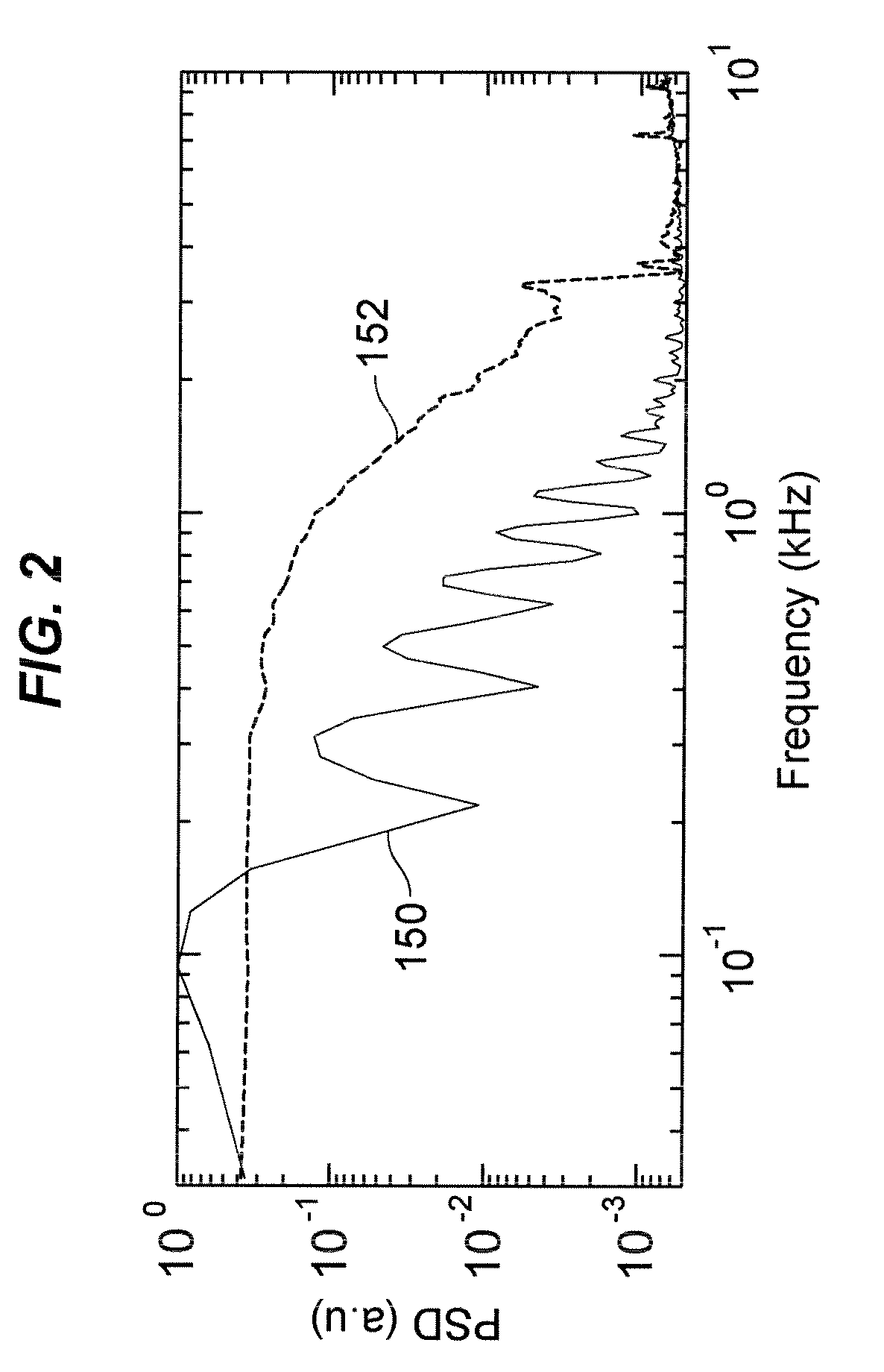Stochastic scanning apparatus using multiphoton multifocal source
a scanning apparatus and multi-photon technology, applied in the field of multi-photon microscopy imaging, can solve problems such as random scanning of foci beams, and achieve the effects of reducing overall, low background, and powerful techniqu
- Summary
- Abstract
- Description
- Claims
- Application Information
AI Technical Summary
Benefits of technology
Problems solved by technology
Method used
Image
Examples
Embodiment Construction
[0028]The present application demonstrates stochastic scanning multiphoton multifocal microscopy (SS-MMM) fluorescence techniques that may be used for high-speed imaging, such as of multiparticle tracking of fast dynamics over large fields of view.
[0029]In an example, a hexagonal array of 100 excitation foci generated from a DOE is described. Stochastically scanning the array across a focal region at a sample provides enhancement in sampling bandwidth and imaging uniformity versus raster scanning. Instead of using a single frequency necessarily well below the resonant frequency, the entire optical scanner (e.g., galvanometer) bandwidth may be used (with amplitude up to 3 kHz, 10× greater than the galvanometer resonant frequency). This approach allows >100-fold more temporal information to be obtained with more uniform coverage over a sample than simply overdriving a multifocal rastering waveform on a galvanometer. The limit is rarefication of sampling, which leads to sparsity in the...
PUM
| Property | Measurement | Unit |
|---|---|---|
| wavelength | aaaaa | aaaaa |
| wavelength | aaaaa | aaaaa |
| diameter | aaaaa | aaaaa |
Abstract
Description
Claims
Application Information
 Login to View More
Login to View More - R&D
- Intellectual Property
- Life Sciences
- Materials
- Tech Scout
- Unparalleled Data Quality
- Higher Quality Content
- 60% Fewer Hallucinations
Browse by: Latest US Patents, China's latest patents, Technical Efficacy Thesaurus, Application Domain, Technology Topic, Popular Technical Reports.
© 2025 PatSnap. All rights reserved.Legal|Privacy policy|Modern Slavery Act Transparency Statement|Sitemap|About US| Contact US: help@patsnap.com



